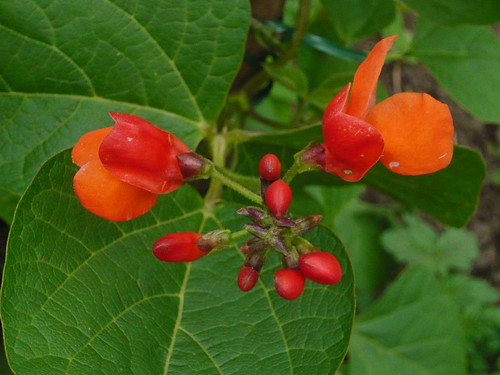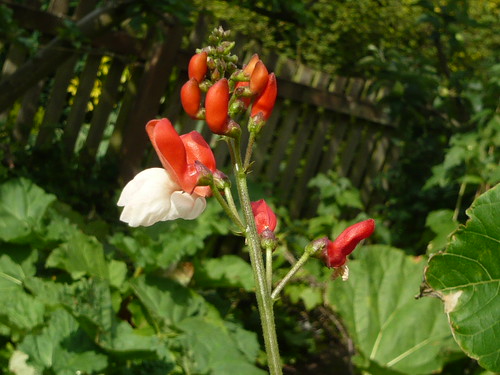Growing Runner Beans in a Dry Summer
Great Runner Beans need plenty of water retentative and nutrient rich soil. That is why preparation is important but here are some more tips to rescue this years crop.
Preparing Runner Bean Bed
- Help the soil to retain moisture by incorporating manure, well rotted compost and wet newspaper at the bottom of a deep 12″ trench in winter.
- Maintain humus rich soil around and above the trench with more compost.
- Rotate crops to a new patch every year on a three or four year cycle.
- Use a 2-3″ deep mulch that is open enough to take water down to the roots. Bark chippings may suit.
Plant Out Runner Beans
- Start off your beans in pots with a deep root run or in open ground.
- Do not feed with heavy nitrogen fertilisers or you will get leaf and less flower.
- Support each plant with a cane in a wigwam shape.
Growing On
- Flowers pollinate best if the air is humid so mist over during a dry spell. I use a ‘Sprayer’ with clean water.
- Water plants well and regularly once they flower or your beans will be stunted and curved. A heavy watering twice a week is better than an dribble or light drop every day.
- Use a sprinkler or hose pipe if you are able. Grey water from baths and showers is OK if you have a watering ban.
- Harvest when beans are still young and have a snap in them. The more you pick the more they flower.
Beans for Dryer Conditions
- Select some of the European beans that are more resistant to dry conditions.
- ‘Algarve’Â is a fast-growing climbing French variety with flat pods
- ‘Lingua di Fuoco’ is a climbing borlotti bean with speckled seeds and showy pods
- The bean above is Painted Lady which has showy flowers but needs the right conditions to excel.
If you want to enter your beans for a local show read tips.
RHS advice on getting runners to set pods is available here.

